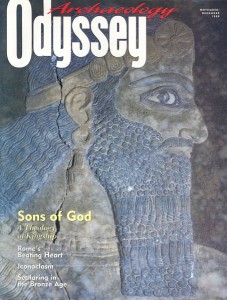“Thou Shalt Not Make Graven Images”: Jewish Iconoclasm
Sidebar to: The Image Destroyers
The destruction of church mosaics in eighth-century Palestine was probably inspired by Muslim laws prohibiting the depiction of any living being. But examples of iconoclasm can be found in the Christian and Jewish traditions as well. The Second Commandment forbids the making of “graven images”—though these words have been interpreted very differently throughout the millennia—and the Hebrew Bible contains numerous references to ancient Israelites who spoke out against idolatry. One of the most famous episodes of Jewish iconoclasm occurred in the late first century B.C., when a group of Jewish scholars stormed the Second Temple in Jerusalem and tried to remove the ailing King Herod’s “idolatrous” statue of a golden eagle. The incident is described in Flavius Josephus’s chronicle The Jewish War:
Already a library member? Log in here.
Institution user? Log in with your IP address.

